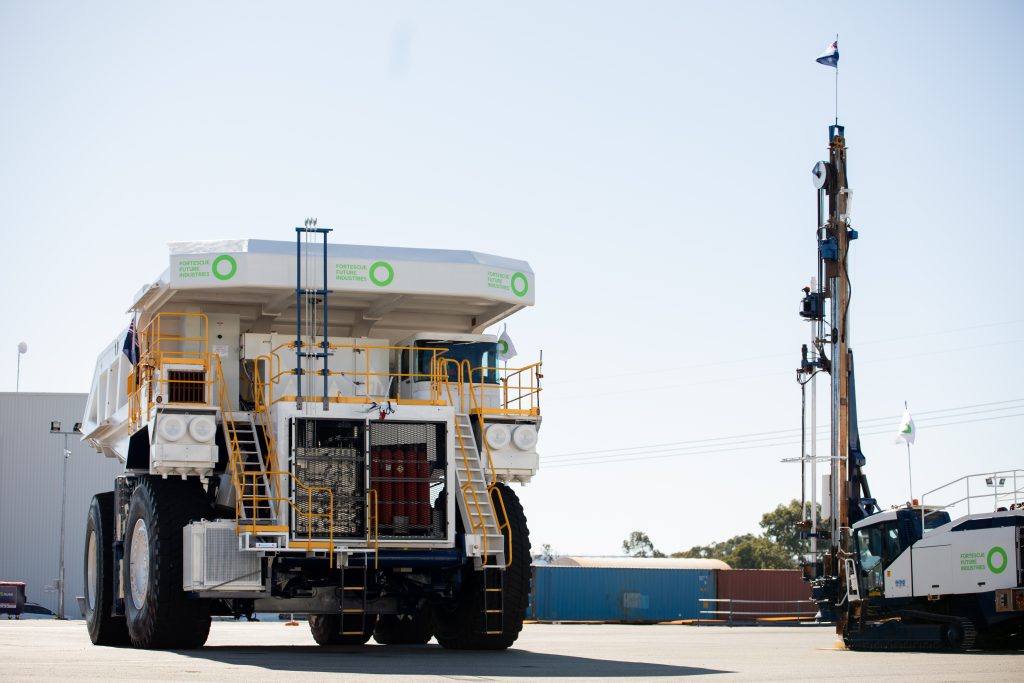In a special op-ed for create, Colin Sheldon FIEAust CPEng, Chair of Engineers Australia’s Mechanical College, explores how decarbonising the mining sector via methods such as electrification is the future – and, increasingly, the present.
We know that mining is responsible for four to seven per cent of global emissions.
The Australian mining sector produced 101.28 Mt CO2-e in 2022, according to the National Greenhouse Accounts 2022 national inventory by economic sector report from the Department of Climate Change, Energy, the Environment and Water.

This compares to:
- 58.83 Mt CO2-e from manufacturing
- 11.45 Mt CO2-e from construction
- 31.42 Mt CO2-e from transport, postal and warehousing
But of course, mining is also vital to the success of the net-zero plans of major industries and nations around the world. The decarbonisation of the mining sector will have an outcome far greater than the sum of its parts.
The opportunity of mining electrification
Decarbonisation starts with improving material and energy efficiency at all stages of the mineral’s extraction and life cycle. This includes improving the utilisation of resources already circulating in the economy, as well as reducing the material needed to be extracted and processed – in turn reducing the energy and emissions expended in mining.
For the energy that is needed to be consumed in a mining context, displacing diesel with an electrified solution is the future and, increasingly, the present. Of course, to maximise the decarbonisation impacts, the electricity supplied needs to be from cleaner and renewable sources.
By electrifying its fleet and decarbonising its electricity supply, mining can reduce its Scope 1 and Scope 2 emissions. In achieving this, the downstream value chain is able to claim a reduction in their own Scope 3 emissions. The embodied carbon of the eventual products and services is reduced and helps companies achieve more sustainable sourcing options.
Contributions towards emissions reduction are particularly important for safeguard facilities, which are rewarded with an actual cost saving for this effort and investment.
How can digital and AI play a role?
AI can play a role from design to operations. This could include systems to better orchestrate activities across the mining value chain to minimise energy requirements while maintaining or improving production levels.
As an example, at Aurecon we recently used simulation and optimisation to support the business case for Australian miners to decarbonise their Heavy Mobile Equipment (HME) fleet.

Leveraging a partnership with Elara, an AI enterprise, a system model of a typical mine haulage network was produced to optimise the operational decision making for a fleet (in the order of 40 units) of heavy-haul trucks – the vehicles that carry ore and waste material around a mine site. This enabled Aurecon to compare the incumbent (diesel) fleet with the desired future state – a zero-emission electric fleet.
Understanding the trade-offs between different fleet arrangements is vital, as electrified HME fleets and associated energy infrastructure involve significant capital outlay.
This modelling conducted by Aurecon’s Dr Kane Usher has demonstrated the ability for mining operations to reduce peak electricity demand for electrified fleet by up to 15 per cent, while maintaining the same production levels. This translates to significant savings in the capital infrastructure (power generation, storage, transmission) required for electrifying the fleet.
With powerful simulation and optimisation tools such as ELARA, optioneering with greater certainty and the ability to move away from conservative, static cost estimates is providing mines with greater confidence in the capital investments they need to make to decarbonise their HME fleets.
Similar approaches can be taken in optimising both design and operations for decarbonisation and energy management across the whole mining value chain.
This solution is just one of many engineering-led changes we’re going to see in mining in Australia over the coming years as the sector races to reduce its carbon emissions.
Australia can lead the way
As a world leader in mining, Australia can also lead the way to electrified mining. Mining companies are investing in sustainable solutions together, irrespective of competition.
For example, Australian miners BHP and Rio Tinto recently announced a collaboration on electrified haul truck trials in the Pilbara, working with manufacturers Caterpillar and Komatsu to test large battery-operated units from the second half of 2024.
The drive to decarbonise has renewed interest in alternatives to ever bigger mining fleets, which have traditionally driven efficiencies. Big trucks and diggers in turn require bigger mine-roads and operating benches, changing how orebodies can best be extracted.
Rio Tinto’s Channar mine in the Pilbara, WA, is trialling “mosquito” fleets of right-sized autonomous trucks, smaller, 40-t payload vehicles to find a fit-for-purpose solution to the optimum truck size challenge. This compares to typical haul trucks of 240-t payload and above.
In-pit crushing and conveying (IPCC) and high angle conveying systems are also becoming a potentially attractive investment alternative. The trade-offs here are the larger capital expense and lower operating cost of conveying versus truck haulage (lower capital, higher operating cost), for mines that are becoming ever deeper.
Further, these alternatives to large trucks and diggers for material movement may unlock more ore more quickly through better mine designs, providing minerals more effectively to all industries that need them to decarbonise.
On the generation side, we’re seeing mines signing large renewable power purchase agreements (PPA) to supply their operations.
Aurecon recently supported Rio Tinto to become Australia’s biggest industrial buyer of renewable power via PPAs to repower their Gladstone operations, which should lower their annual carbon emissions by about five million tonnes.
For other mines, co-developing their own renewable generation plants is an attractive option. (Only last month, lithium mining company Liontown Resources flicked the switch on Australia’s largest off-grid renewable energy generator.)
Using AI, simulation and optimisation tools such as Elara, these systems can be more optimised in both design and operations, potentially reducing the capital spend required without impacting production levels. This can enable mine operators and owners to bring forward decision-making, and the rewards, for decarbonising.
Most importantly, as we look to the future, the innovation in the sector draws an entirely new talent pool into mining; it’s attracting engineers who can leverage technology and knowledge from other industries.
For engineers, including those contemplating or new to the profession, it’s an incredible opportunity to be part of a pivotal moment in our efforts towards addressing climate change. That’s exciting – when you work in mining today, you really can make a massive difference.
Colin Sheldon FIEAust CPEng is Manager, Asset Management and Performance at Aurecon.
Explore more ways of furthering decarbonisation at Engineers Australia’s Climate Smart Engineering 2024 conference in November.
